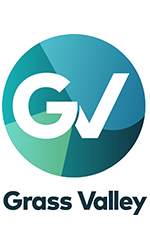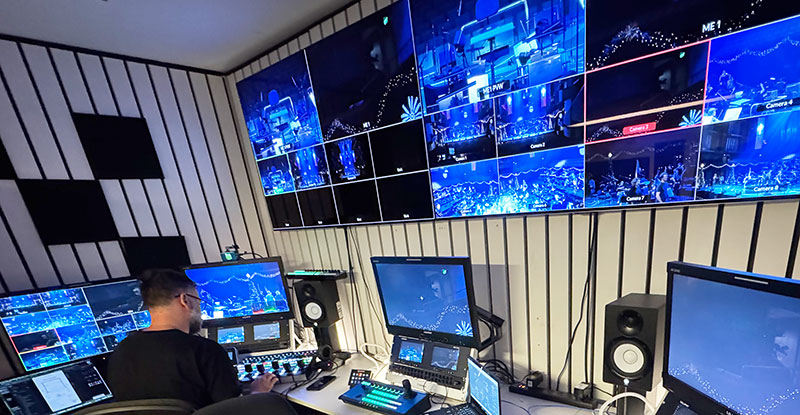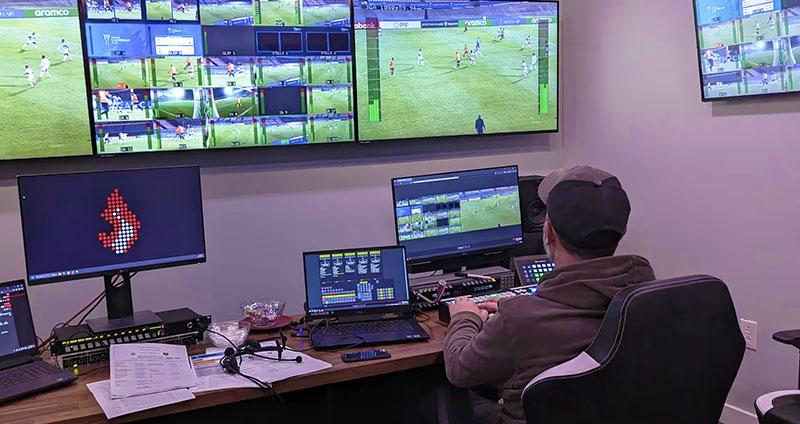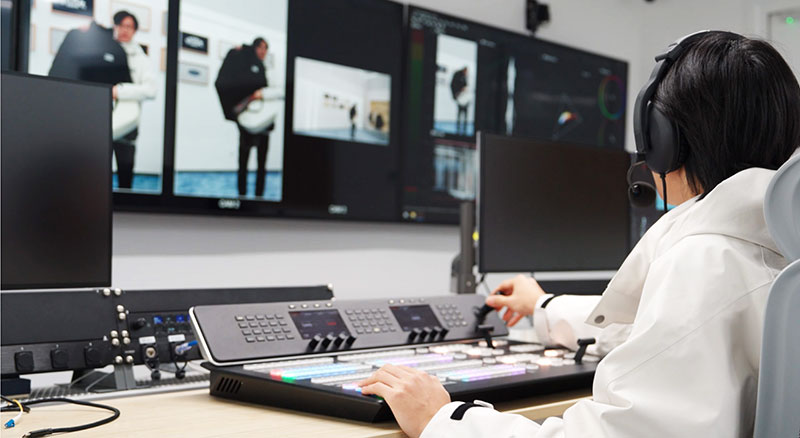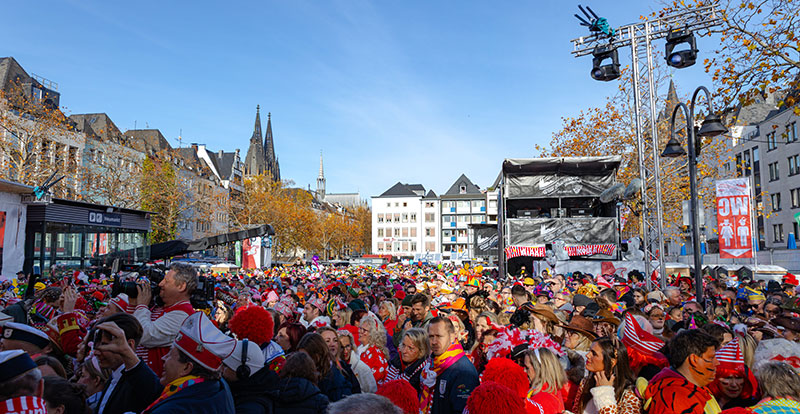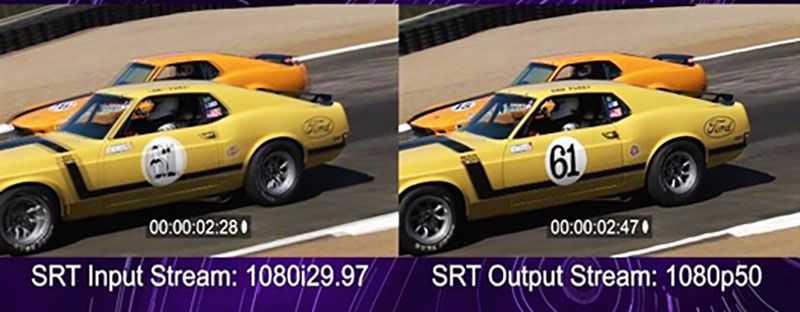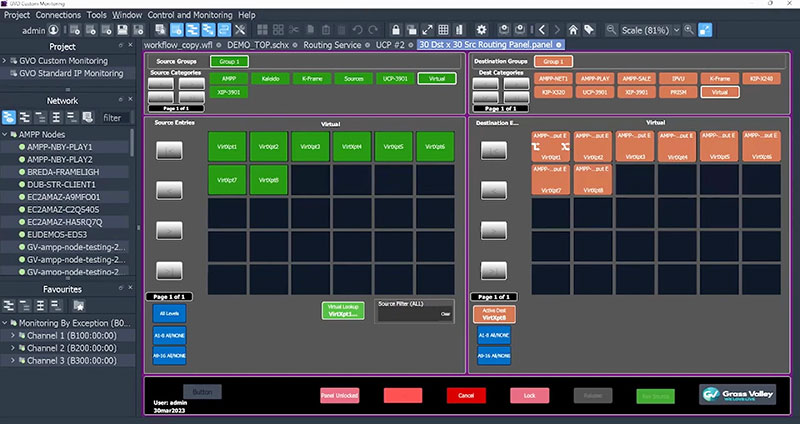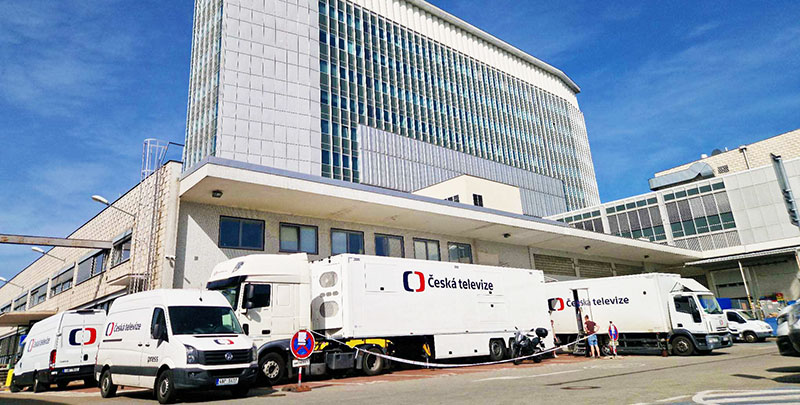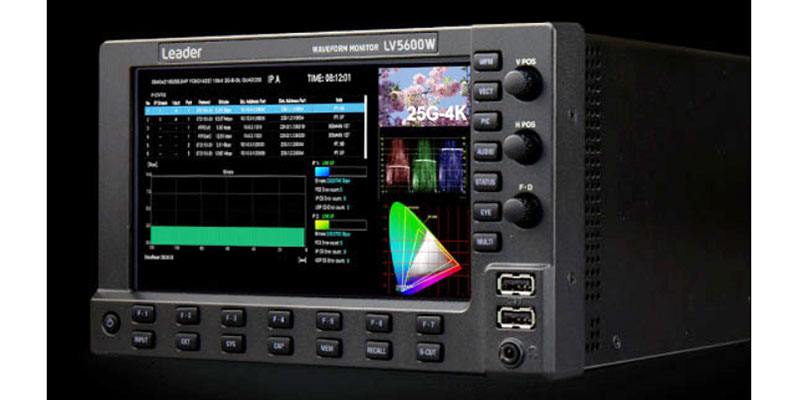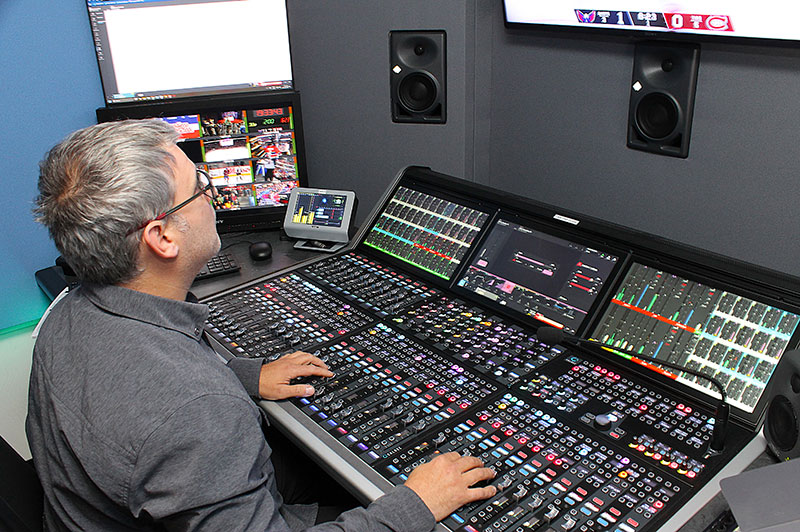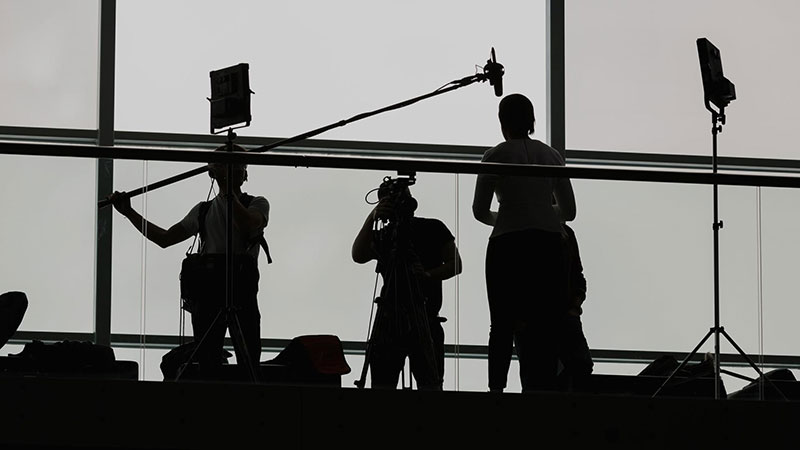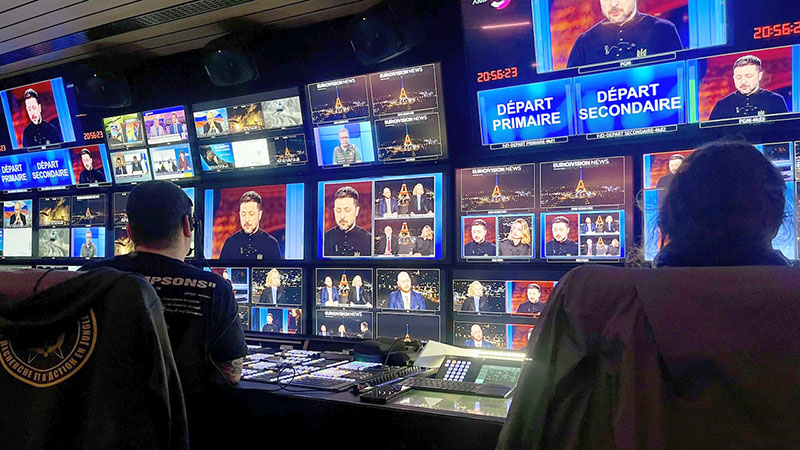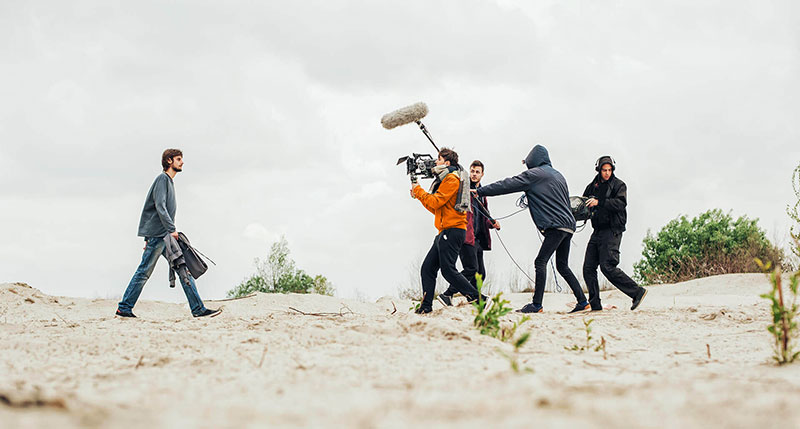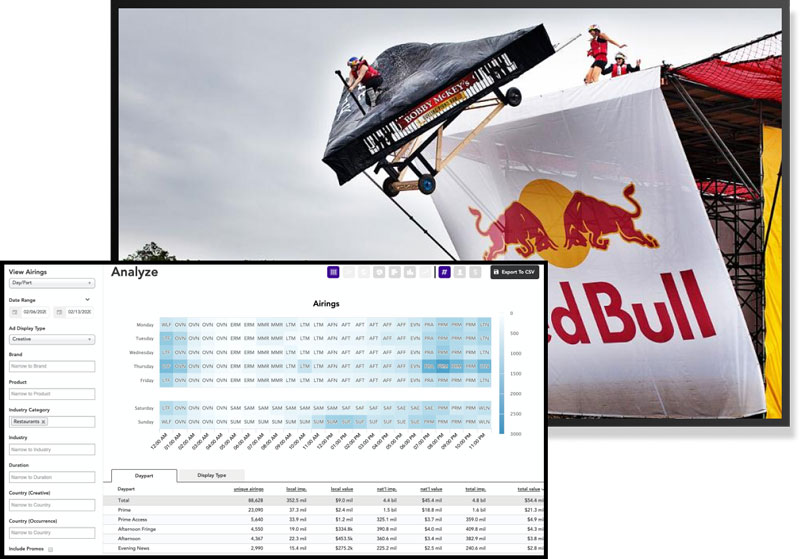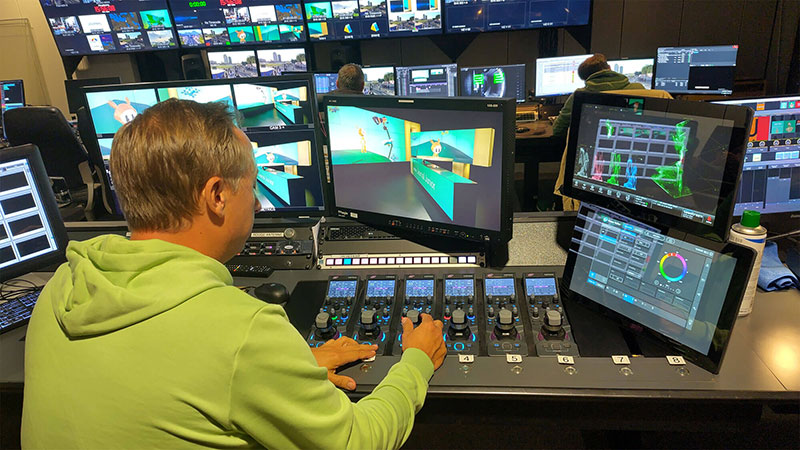BLADE//runner’s routing, processing and conversion functions now feature key performance enhancements and a simplified licensing model for faster more flexible, scalable access.
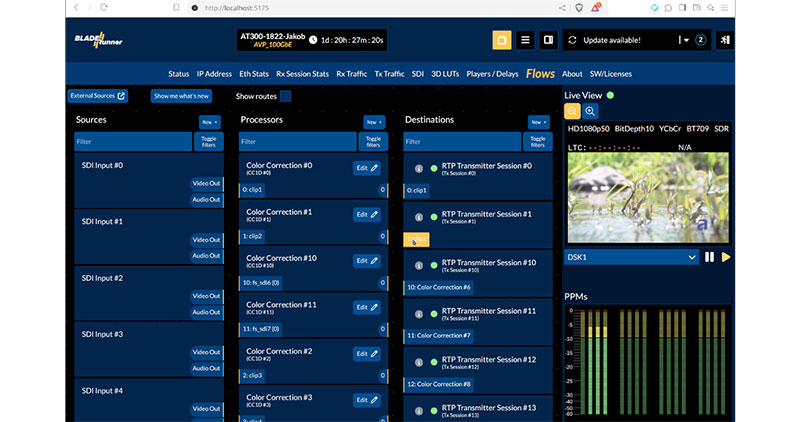
Flows is part of the Blade//runner GUI hosted on AT300 blades, used as a graphical way to route audio and video, create transmitters, receivers, players and processors, and activate/deactivate transmitter and receiver sessions.
Arkona Technologies' new version 2.8 release of its BLADE//runner suite continues to aim for agile, high-performance control across software-defined broadcast infrastructures. The suite, a platform that delivers ultra-low latency audio/video routing, compression and processing tools in live production environments, will now help users increase efficiency, interoperability and creative flexibility. In particular this update adds a new licensing fee structure, designed to make user access simpler, easier and more cost effective.
BLADE//runner on AT300 FPGA Hardware
The BLADE//runner platform is built on Arkona’s AT300 FPGA hardware, a networked media processor with dual 100GE network interfaces and 16x16 UHD-capable SDI I/O. With its field-programmable gate array (FPGA) design, the AT300 keeps end-to-end processing delay to a minimum, which is critical in IP-based workflows, and has robust buffering capabilities for signal alignment. It also achieves very high video and audio density.
BLADE//runner combines routing, processing and conversion within a single scalable framework, resulting in a complete software-defined ecosystem for real-time broadcast infrastructure. Broadcasters can use it as a platform of tools to perform demanding tasks like colour correction, HDR/SDR conversion, audio processing and JPEG-XS compression in environments that need to maintain ultra-low latency and high channel density.
The platform has a flexible, modular core that allows users to create and delete resources and functions on-the-fly. Users can deploy and reconfigure BLADE//runner’s processing APPs dynamically, using ST 2110, NMOS and other open standards to bridge SDI and IP domains.
By pulling hardware functions together on the platform that have traditionally been separated, broadcasters, live production companies and OB providers have more flexibility to scale and adapt workflows in real time, whether managing hybrid infrastructures or migrating fully to IP. The result is greater efficiency, reduced rack space and power usage, and an adaptable production environment that quickly responds to changing operational needs.
Two-Level Licensing Structure
A major change in the 2.8 update is the BLADE//runner licensing model, which is now restructured to give users comprehensive, flexible access to functionality when they need it, more cost-effectively. Previously, users would purchase licenses for each of the APP functions available on BLADE//runner. In version 2.8, arkona simplifies the process by opening up a range of functionality that users can access on two tiers – CORE and MAX.
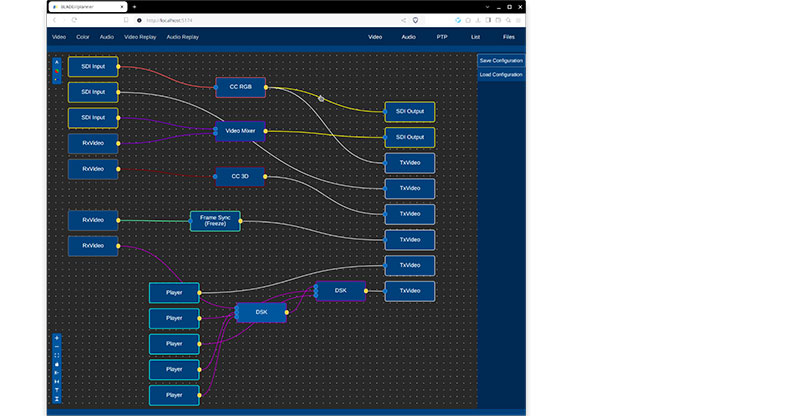
Blade//planner is an offline application used to configure blades without using a full control system or scripting. It creates and routes all video and audio sources and destinations without active connections to Blade//runner.
CORE (see above) gives access to arkona’s primary applications, allowing users to reconfigure their AT300 blades according to their own workflow and need. The MAX license adds further functionality such as DSPs and effect delays, colour correction and format conversion, video mixing and keying, and loudness metering across all applications. While JPEG-XS licensing stays as it was, the CORE and MAX licenses make it easier, less expensive and more adaptable for broadcasters to access BLADE//runner’s performance.
Erling Hedkvist, Sales & Business Development for arkona technologies, said, “Our change to the licensing structure serves to reinforce a key arkona concept, the idea of flexibility at the CORE.”
Improved Latency, Routing, DSP
Arkona’s version 2.8 also makes BLADE//runner simpler to use. For instance, the RTP memory subsystem is reorganized to make underused audio packet memory available to video receivers, which raises the latency differential ceiling for UHD-heavy uncompressed video workflows. As a side effect, microburst absorption capabilities have improved, allowing the system to better handle bursty transmitters.
A new local loopback feature lets the system automatically forward locally generated media traffic from its transmitters to its receivers. Users can build non-blocking distributed routing matrices regardless of the network’s support for Multicast loopback.
Audio DSP improvements are another major focus of the 2.8 update, including the introduction of reverb effects, a gain-sharing auto-mixer, and considerably extended GPI (General-Purpose Interface) support.
Ehrling said, “The market is already intimately familiar with arkona products – even if they don’t yet realise it. We’ve been the driver behind some of the most advanced live production architectures of the past decade, operating quietly on an OEM basis. Now working under our own name with full control, we are able to shape the user experience and product development roadmap directly, while still supporting our legacy systems.” arkonatech.com

